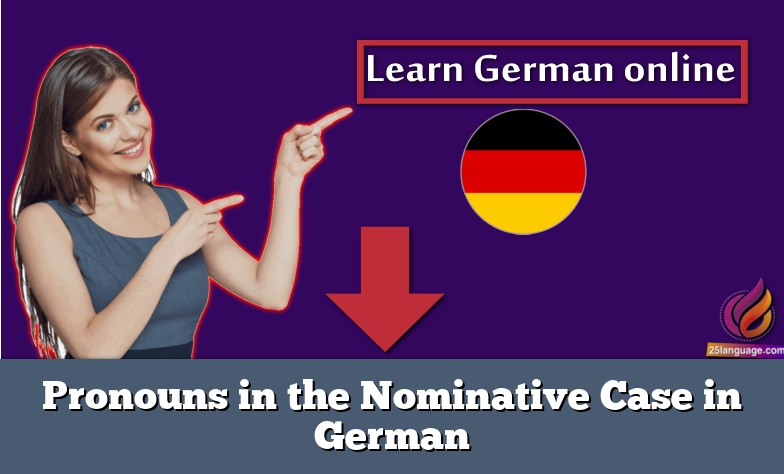Pronouns in the Nominative Case in German

Today we are going to talk about Pronouns in the Nominative Case in German so you can be more efficient in your dealings.
Most of the personal pronouns are used as subjects of their verbs. These represent the nominative case in German (as in English).
We will shortly learn three other cases in German: the accusative for direct objects, the dative for indirect objects, and the genitive for expressing possession.
For now, remember that the singular personal pronouns in English (nominative case) are “I”, “you”, and “he/she/it” (1st, 2nd, and 3rd persons) and the nominative case is used as the subject of a verb. In German, these pronouns are rendered as ich, du, and er/sie/es.
In these example sentences, the subject of the verb is underlined:
Ich gehe einkaufen. I go shopping.
Er studiert Biologie. He studies biology.
Es geht mir gut. It goes well with me. ( = I am fine).
Wohin gehst du? Where are you going? (Notice subject verb reversal in question sentence)
There are, of course, plural personal pronouns in the English nominative case: “we”, “you”, and “they”; and in German, these nominative case pronouns are wir, ihr, and sie. These appear in the following examples:
Wir gehen einkaufen. We go shopping.
Ihr versteht die Frage. You all understand the question.
Ihr habt die Anleitungen. You (all) have the instructions.
Sie verstehen die Arbeit. They understand the work.
In both English and German, the 3rd person singular also has gender. As you will next learn, the 2nd person (person being addressed) in German has both familiar and polite (formal) forms. Further, it is worth repeating here that the verb form changes when the subject changes. That is, in German the verb form must match the subject of a sentence. Here are some examples; compare with the previous three example sentences above and note how the verb form changed to match the sentence subject:
Ich verstehe die Arbeit. I understand the work.
Du gehst einkaufen. You go shopping.
Ich habe alle Antworten. I have all the answers.
Er hat die Anleitungen. He has the instructions.
In the last example, the English verb form (‘have’) also changed based upon the subject of the sentence.



























